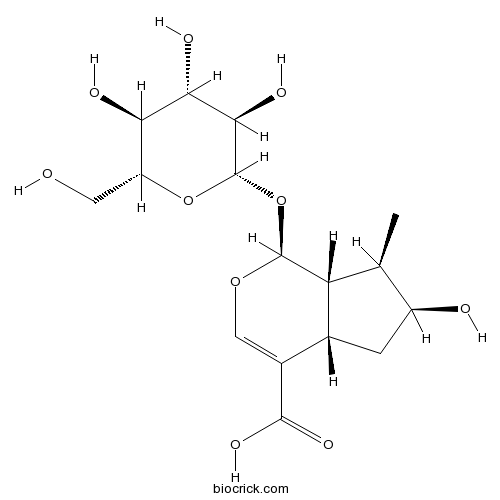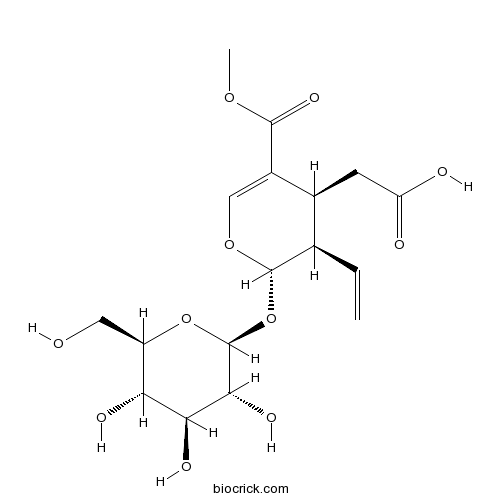Hydrangea macrophylla
Hydrangea macrophylla
1. The products in our compound library are selected from thousands of unique natural products; 2. It has the characteristics of diverse structure, diverse sources and wide coverage of activities; 3. Provide information on the activity of products from major journals, patents and research reports around the world, providing theoretical direction and research basis for further research and screening; 4. Free combination according to the type, source, target and disease of natural product; 5. The compound powder is placed in a covered tube and then discharged into a 10 x 10 cryostat; 6. Transport in ice pack or dry ice pack. Please store it at -20 °C as soon as possible after receiving the product, and use it as soon as possible after opening.
Natural products/compounds from Hydrangea macrophylla
- Cat.No. Product Name CAS Number COA
-
BCN5057
Loganic acid22255-40-9
Instructions

-
BCN5009
Morroniside25406-64-8
Instructions

-
BCN0310
trans-p-Coumaric acid501-98-4
Instructions

-
BCN5800
Secoxyloganin58822-47-2
Instructions

-
BCN4450
Neochlorogenic acid906-33-2
Instructions

Predator experience changes spider mites' habitat choice even without current threat.[Pubmed: 29849059]
As recent studies have revealed, previous exposure to a predator can change prey behavior even in the absence of current threat. We hypothesized that experiencing a predator increases prey avoidance of lower-quality resources even in the absence of a predator, which in turn influences the prey's spatial distribution. We examined these hypotheses using the herbivorous spider mite Tetranychus kanzawai and the specialist predatory mite Neoseiulus womersleyi. We used Phaseolus vulgaris as a high-quality host plant and Hydrangea macrophylla as a low-quality host plant. First we examined whether T. kanzawai females that were previously exposed to predators preferred P. vulgaris to H. macrophylla under no current threat more than those without predator experience. Second, we tested the effect of predator experience on dispersal by T. kanzawai females on P. vulgaris or on H. macrophylla. Our results show that: (1) predator-experienced T. kanzawai females expressed stronger avoidance of the low-quality plant H. macrophylla than those without predator experiences; and (2) T. kanzawai females transferred to H. macrophylla traveled farther than those on P. vulgaris, especially females with previous predator experience. These findings reveal neglected aspects of the evolutionary interaction between predators and the habitat choices of their prey.
Hepatoprotective Role of Hydrangea macrophylla against Sodium Arsenite-Induced Mitochondrial-Dependent Oxidative Stress via the Inhibition of MAPK/Caspase-3 Pathways.[Pubmed: 28698525]
None
A new species of the genus Thrips (Thysanoptera: Thripidae) from the Western Ghats of India.[Pubmed: 28187653]
Thrips laurencei sp.n. is described from specimens collected on flowers of Hydrangea macrophylla in Western Ghats range of Tamil Nadu, India. This new species shows sexual dimorphism in colour, with the females brownish yellow with brown shadings but the males uniformly yellow.
Complete Genome Sequences of Two Hydrangea Ringspot Virus Isolates from Japan.[Pubmed: 27034476]
Hydrangea ringspot virus (HdRSV) is a plant RNA virus, naturally infectingHydrangea macrophylla Here, we report the first genomic sequences of two HdRSV isolates from hydrangea plants in Japan. The overall nucleotide sequences of these Japanese isolates were 96.0 to 96.3% identical to those of known European isolates.
Hydrangenol inhibits lipopolysaccharide-induced nitric oxide production in BV2 microglial cells by suppressing the NF-κB pathway and activating the Nrf2-mediated HO-1 pathway.[Pubmed: 27032067]
We previously demonstrated the anti-inflammatory effect of water extract of Hydrangea macrophylla in lipopolysaccharide (LPS)-stimulated macrophage cells. Here, we investigated whether hydrangenol, a bioactive component of H. macrophylla, attenuates the expression of nitric oxide (NO) and its associated gene, inducible NO synthase (iNOS), in LPS-stimulated BV2 microglial cells. Our data showed that low dosages of hydrangenol inhibited LPS-stimulated NO release and iNOS expression without any accompanying cytotoxicity. Hydrangenol also suppressed LPS-induced nuclear translocation of nuclear factor-κB (NF-κB) subunits, consequently inhibiting DNA-binding activity of NF-κB. Additionally, the NF-κB inhibitors, pyrrolidine dithiocarbamate (PDTC) and PS-1145, significantly attenuated LPS-induced iNOS expression, indicating that hydrangenol-induced NF-κB inhibition might be a key regulator of iNOS expression. Furthermore, our data showed that hydrangenol suppresses NO production by inducing heme oxygenase-1 (HO-1). The presence of cobalt protoporphyrin, a specific HO-1 inducer, potently suppressed LPS-induced NO production. Hydrangenol also promoted nuclear translocation of nuclear factor erythroid 2-related factor 2 (Nrf2) and subsequently increased its binding activity at the specific antioxidant response element sites. Additionally, transient knockdown of Nrf2 significantly downregulated hydrangenol-induced HO-1 expression, indicating that hydrangenol-induced Nrf2 is an upstream regulator of HO-1. Taken together, these data suggest that hydrangenol attenuates NO production and iNOS expression in LPS-stimulated BV2 microglial cells by inhibiting NF-κB activation and by stimulating the Nrf2-mediated HO-1 signaling pathway. Therefore, hydrangenol is a promising therapeutic agent for treatment of LPS-mediated inflammatory diseases.


